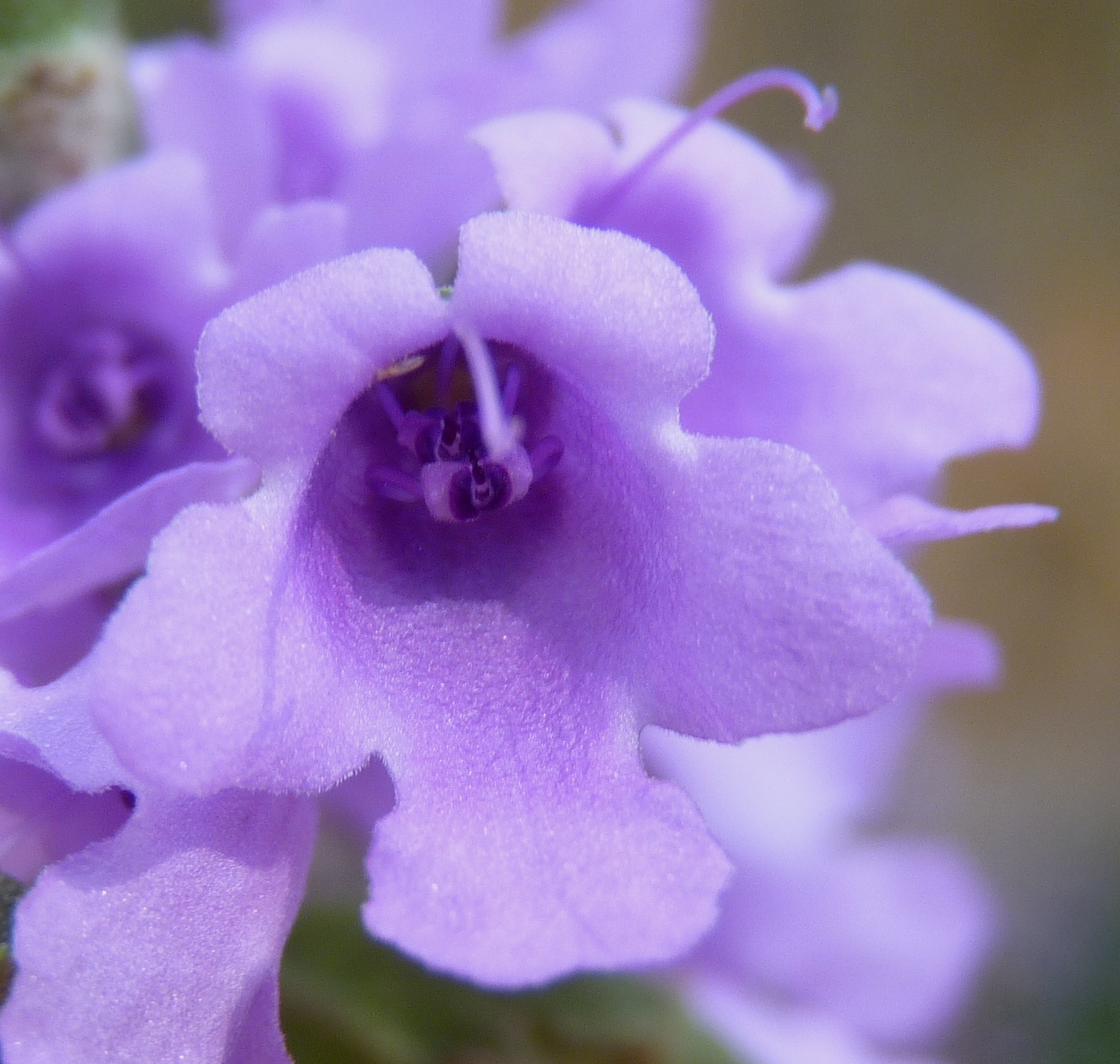
Greek prostheke — appendage, antheros — flowery, referring to the anthers, which have appendages.
Shrubs or rarely trees. Leaves opposite, occasionally in 3s. Flower clusters axillary or terminal. Flowers with calyx 2-lipped, often swelling and colouring in fruit. Corolla 2-lipped, the tube usually swollen in the throat, lower lip 3-lobed, upper lip notched or 2-lobed. Stamens 4, the connective sometimes elongated to form a protuberance. Ovary 4-lobed.
Grown for the bushy habit, mint scent and attractive flowers.
Cuttings and grafting.
Foliage often smelling of mint. Calyx 2-lipped, both the upper and lower lips either undivided or notched only.
SA: Mt Lofty Botanic Garden, Adelaide, has about 22 taxa.
About 100 species endemic to Australia and present in all states.
Althofer (1978), Conn (1984, 1988).
The range of species available varies from year to year; a key would probably not aid in identification.
Source: (2002). Origanum. In: . Horticultural Flora of South-eastern Australia. Volume 4. Flowering plants. Dicotyledons. Part 3. The identification of garden and cultivated plants. University of New South Wales Press.

Cultivars possibly of hybrid origin
Probably the species P. walteri.
Plant introduced in 1985.
Prostanthera 'Poorinda Ballerina'
A small to medium shrub with masses of white flowers in spring.
A hybrid, P. lasianthos × P. phylicifolia, raised as a seedling from P. 'Snow Queen' by Leo Hodge, c. 1963.
A small evergreen shrub with a mass of white flowers in spring.
Probably originating in the mid-1970s.